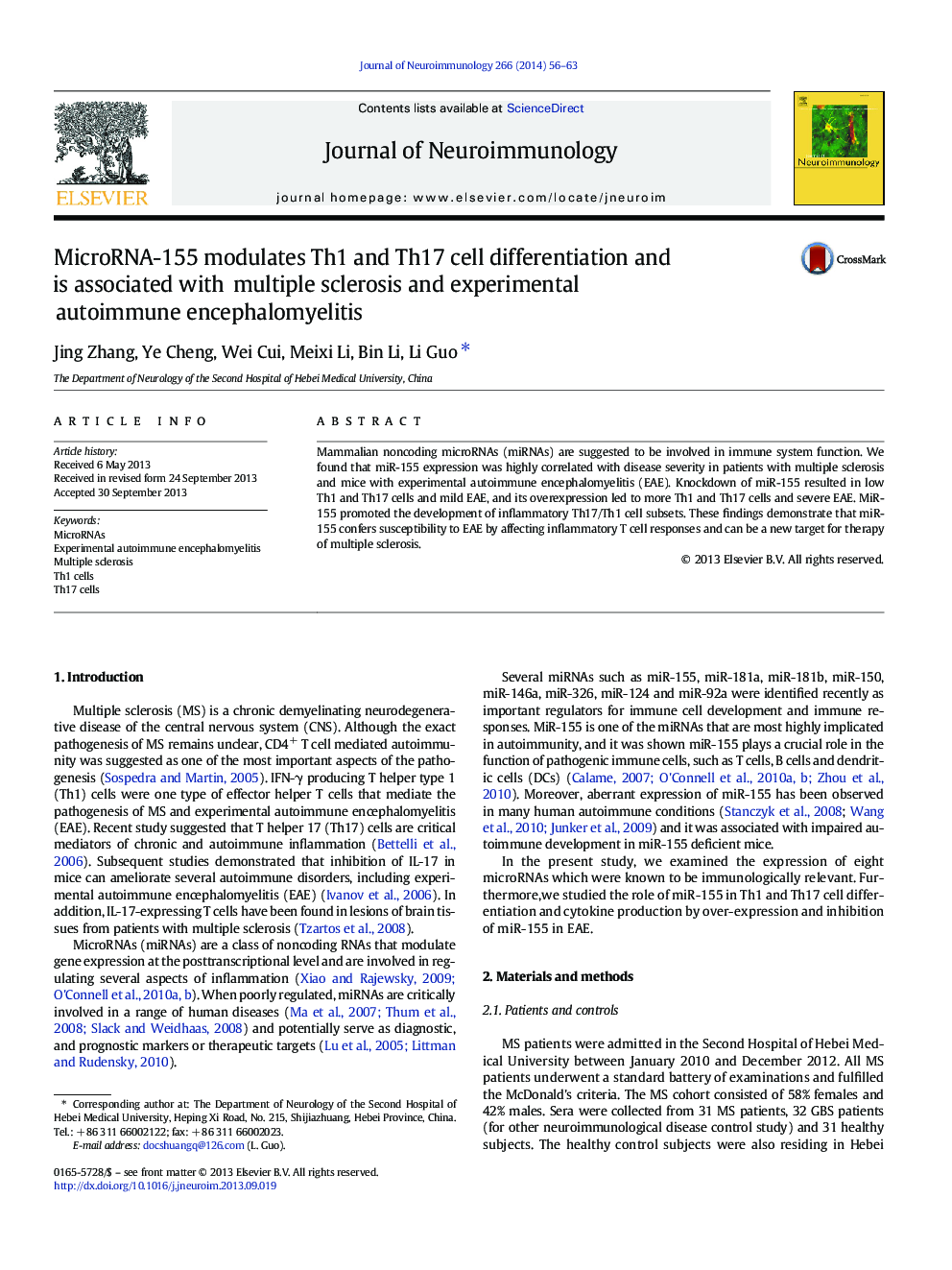| Article ID | Journal | Published Year | Pages | File Type |
|---|---|---|---|---|
| 3064207 | Journal of Neuroimmunology | 2014 | 8 Pages |
•MiR-155 expression was highly correlated with RRMS and EAE.•Knockdown of miR-155 in mice resulted in low ratio of Th1/Th17 and mild EAE.•MiR-155 overexpression led to high proportionality of Th1/Th17 and severe EAE.
Mammalian noncoding microRNAs (miRNAs) are suggested to be involved in immune system function. We found that miR-155 expression was highly correlated with disease severity in patients with multiple sclerosis and mice with experimental autoimmune encephalomyelitis (EAE). Knockdown of miR-155 resulted in low Th1 and Th17 cells and mild EAE, and its overexpression led to more Th1 and Th17 cells and severe EAE. MiR-155 promoted the development of inflammatory Th17/Th1 cell subsets. These findings demonstrate that miR-155 confers susceptibility to EAE by affecting inflammatory T cell responses and can be a new target for therapy of multiple sclerosis.
Graphical abstractFigure optionsDownload full-size imageDownload high-quality image (81 K)Download as PowerPoint slide
